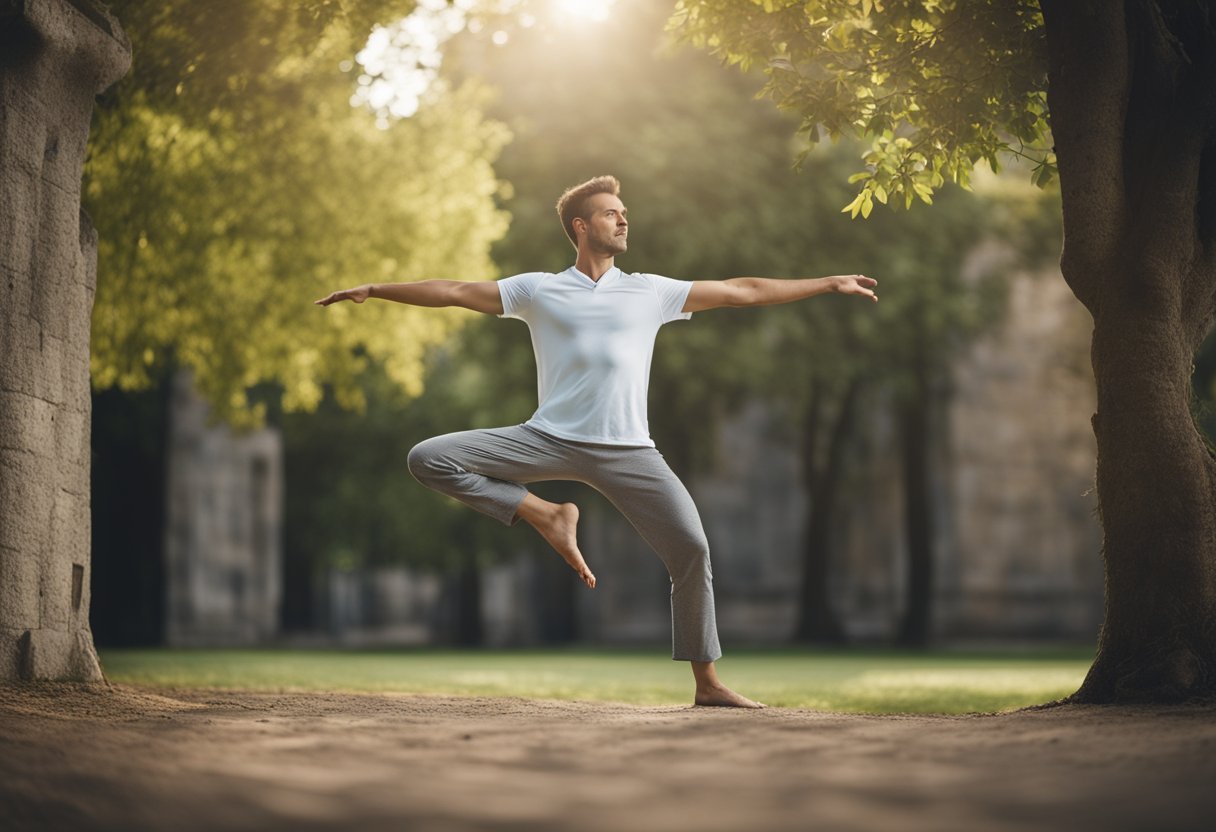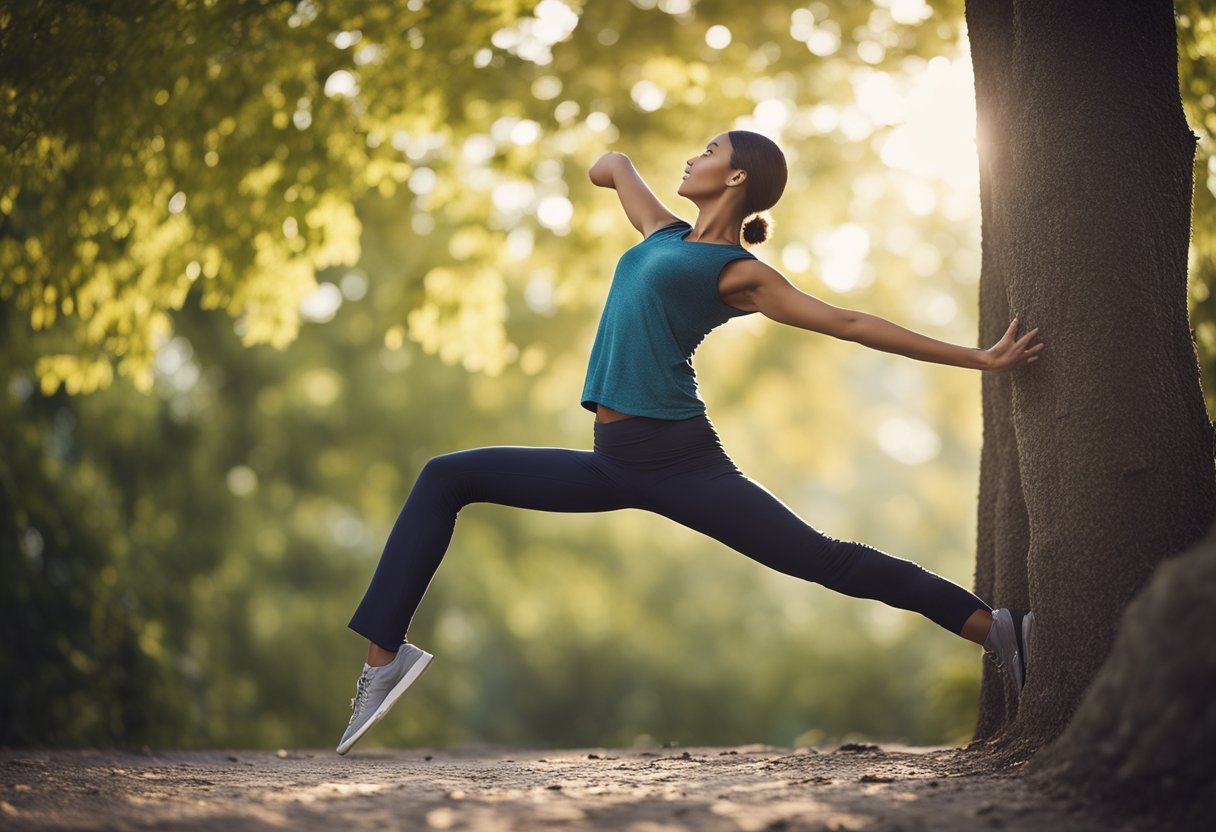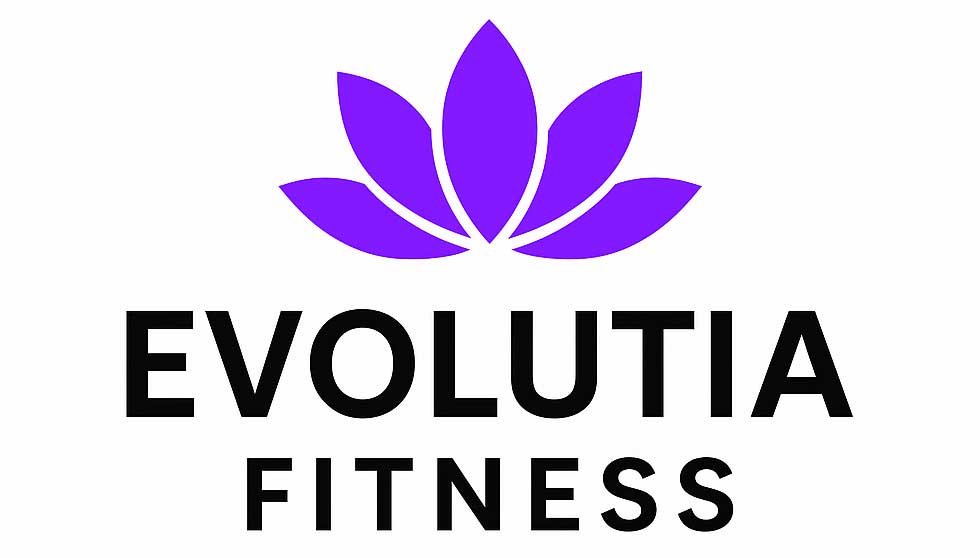Tree Pose (Vrksasana) with wall support offers beginners and practitioners with balance challenges a stable variation to experience this classic yoga posture. The wall acts as a reliable prop, providing confidence while you benefit from increased alignment and stability.
Using the wall for Tree Pose helps develop proper form before attempting the full unsupported version, reducing the risk of falls or injury. Many yoga teachers recommend this variation for new students or those recovering from injuries that affect balance.
The wall variation allows practitioners to focus on opening the hip and strengthening the standing leg without the distraction of trying to maintain balance. This mindful approach builds a strong foundation for eventually practicing Tree Pose in the center of the room.
Table of Contents
Overview of Tree Pose (Vrksasana)
Tree Pose is a fundamental standing balance posture in yoga that strengthens the legs while improving focus and concentration. This classic pose mimics the steady, grounded nature of a tree while creating length through the spine and opening the hips.
Origins and Significance
Tree Pose, or Vrksasana in Sanskrit, has been practiced for thousands of years as part of the yoga tradition. The name comes from the Sanskrit words “vrksa” meaning tree and “asana” meaning pose or posture.
This pose appears in ancient yoga texts like the Hatha Yoga Pradipika, highlighting its long-standing importance in yoga practice. Trees symbolize groundedness, patience, and the connection between earth and sky in many cultures.
The posture teaches practitioners to find balance between steadiness (sthira) and ease (sukha) – a central concept in yoga philosophy. By emulating a tree’s ability to remain rooted while swaying with the wind, practitioners develop both physical and mental resilience.
Benefits of Tree Pose (Vrksasana)
Tree Pose offers numerous physical benefits including:
- Improved balance and stability in the ankles, knees, and hips
- Strengthened leg muscles, particularly in the standing leg
- Enhanced hip mobility through gentle opening
- Better posture by lengthening the spine and opening the chest
Beyond physical advantages, Tree Pose delivers significant mental benefits:
- Increases concentration and mental focus
- Builds patience and perseverance
- Reduces anxiety through mindful practice
- Promotes a sense of inner calm and groundedness
The pose also helps practitioners develop proprioception – awareness of body position in space. Regular practice can improve coordination and may benefit those recovering from lower body injuries when practiced with proper variations.
Preparation for Tree Pose (Vrksasana)
Proper preparation is essential for achieving stability and alignment in Tree Pose, especially when using wall support. Taking time to prepare both physically and mentally will enhance your experience and reduce the risk of injury.
Physical and Mental Preparation
Begin by standing in Mountain Pose (Tadasana) with your feet hip-width apart and your spine straight. Take a few deep breaths to center yourself and establish a strong connection with the ground beneath you. This creates a solid foundation for the pose.
Roll your shoulders back and down to release any tension in your upper body. Gently rotate your ankles and stretch your calves to warm up the lower body muscles that will be engaged during the pose.
Practice shifting your weight from one foot to the other while maintaining good posture. This helps develop the balance and stability needed for Tree Pose.
Mentally focus on a fixed point in front of you at eye level. This drishti (gaze point) will help maintain balance when you transition into the full pose.
Safety Considerations
Choose a clear wall space without obstructions or decorations that could interfere with the pose. The wall surface should be flat and stable to provide reliable support.
Wear comfortable clothing that allows free movement. Avoid loose pants that might make it difficult to place your foot on your standing leg properly.
If you have any ankle, knee, or hip injuries, consult with a healthcare provider before attempting Tree Pose. Variations may be necessary to accommodate your specific needs.
Always listen to your body and avoid forcing yourself into positions that cause pain. Mild stretching sensations are normal, but sharp pain indicates you should ease out of the pose immediately.
Remove your socks to maintain better contact with the floor, reducing the risk of slipping. If balance is particularly challenging, place a non-slip yoga mat against the wall for added stability.
Executing Tree Pose (Vrksasana) with Wall Support
Tree Pose with wall support offers stability while building balance and strength. The wall acts as a reliable prop that helps practitioners maintain proper alignment and gain confidence before attempting the pose in the center of the room.
Starting Position
Stand with your right side facing a wall, approximately 6-12 inches away. Place your right hand lightly on the wall for balance. Distribute your weight evenly through both feet while standing tall with your shoulders relaxed and spine elongated.
Ground through all four corners of your left foot, creating a solid foundation. This grounding action benefits your standing leg and improves overall balance.
Engage your core muscles by drawing your navel gently toward your spine. This core activation is essential for maintaining stability throughout the pose.
Alignment and Balance
Shift your weight onto your left foot while keeping your gaze focused on a fixed point ahead. This focal point helps maintain balance and concentration during the pose.
Bend your right knee and place the sole of your right foot against your left inner thigh, either above or below the knee, never directly on the knee joint. The height of foot placement can be adjusted based on your flexibility and comfort level.
Ensure your hips remain square and level. Many practitioners tend to tilt their hips, which compromises proper alignment. The wall helps provide feedback on hip positioning.
Press your foot and inner thigh against each other to create active engagement in the pose. This reciprocal action improves stability and strengthens leg muscles.
Use of Wall for Support
Position your right hand against the wall with fingers spread for maximum support. The wall contact should be light but steady—enough to help with balance without becoming dependent on it.
As you gain confidence, experiment with reducing wall contact by using just fingertips instead of the whole hand. This gradual reduction helps build independent balance skills.
Try these wall-supported variations to progress:
- Beginner: Keep hand firmly on wall
- Intermediate: Use only fingertips for support
- Advanced: Hover hand near wall without touching
The wall provides immediate feedback about alignment issues. If you find yourself leaning heavily into the wall, adjust your core engagement and standing leg stability.
Practice breathing deeply and evenly throughout the pose. Hold for 30-60 seconds before releasing and repeating on the opposite side.
Variations and Modifications

Tree Pose with wall support offers several adaptations to accommodate different body types, flexibility levels, and balance capabilities. These variations ensure the pose remains accessible while still providing benefits to practitioners of all experience levels.
Alternative Foot Placements
The traditional Tree Pose places the foot against the inner thigh of the standing leg, but several foot positions can make the pose more accessible. Beginners may place the foot on the inner ankle with just the toes touching the floor for additional support. This creates a “kickstand” effect while still engaging the core.
For moderate stability, practitioners can rest the foot against the inner calf muscle. This position avoids pressing against the knee joint while still challenging balance for maximum benefits.
Those with greater flexibility might explore placing the foot higher on the inner thigh or even holding the foot with the hand in a half-bound position. When using wall support, these variations become more accessible and can be practiced with greater confidence.
Tree Pose Variations for Different Skill Levels
Beginner Variations:
- Stand with entire back against the wall
- Keep both hands on the wall for maximum stability
- Focus on proper alignment before adding arm variations
- Practice with eyes open, focusing on a fixed point
Intermediate Options:
- Stand with only the shoulder blades touching the wall
- Experiment with one hand on the wall, one in prayer position
- Try closing eyes briefly to enhance proprioception
Advanced Variations:
- Use just one shoulder blade against the wall
- Explore arm positions like tree branches reaching upward
- Practice moving slightly away from the wall, using it only as occasional support
The distance from the wall can be adjusted gradually to build confidence. Start 2-3 inches away and increase distance as balance improves.
Integrating Tree Pose (Vrksasana) into Your Practice

Tree Pose with wall support serves as a foundational balance posture that complements various yoga sequences. Proper integration enhances stability while creating mindful transitions between standing poses.
Sequencing with Other Poses
Tree Pose works effectively as a transitional posture between standing and floor sequences. Begin with Mountain Pose (Tadasana) to establish proper alignment before moving into Tree Pose with wall support. This creates a natural progression of stability.
Effective sequences include:
- Mountain Pose → Tree Pose → Warrior II
- Downward Dog → Mountain Pose → Tree Pose → Standing Forward Fold
- Tree Pose → Triangle Pose → Extended Side Angle
For beginners, place Tree Pose early in the sequence when energy levels remain high. More experienced practitioners can incorporate it mid-sequence to challenge balance when muscles have warmed.
Tree Pose also pairs well with other balance postures. Moving from Tree to Eagle Pose helps practitioners compare different balance sensations.
Incorporating Breath Work
Controlled breathing enhances stability and focus during Tree Pose (Vrksasana). Practitioners should establish a steady ujjayi breath before beginning the posture, maintaining even inhalations and exhalations throughout.
Try this breath pattern for deeper focus:
- Inhale while raising the foot to the inner thigh
- Hold the breath briefly as you find stability
- Exhale as you settle into the final position
- Continue with 4-count breaths (inhale 4, exhale 4)
Visualization techniques enhance breath work during Tree Pose. Practitioners can imagine roots growing from the standing foot into the earth with each exhale, creating a mental anchor for stability.
For those using wall support, breath awareness helps track progress. As breathing becomes more controlled, dependence on the wall naturally decreases.
Frequently Asked Questions About Tree Pose
Tree Pose with wall support generates many questions from practitioners seeking to perfect this foundational balance posture. The following answers address common concerns about variations, benefits, safety considerations, and techniques to enhance your practice.
What variations can beginners use when performing the Tree Pose with wall support?
Beginners can place their raised foot against their ankle instead of higher on the leg. This variation maintains stability while still engaging core muscles.
Another helpful adjustment is keeping the raised knee pointed slightly forward rather than fully to the side if hip flexibility is limited.
Practitioners may also keep their hands on their hips rather than overhead if shoulder mobility is restricted or balance feels precarious.
How does supporting the Tree Pose against a wall enhance its benefits?
Wall support allows practitioners to focus on proper alignment without fear of falling. This security enables longer holds, deepening the stretch in hips and strengthening leg muscles more effectively.
The wall provides tactile feedback, helping practitioners recognize when they’re leaning or misaligned. This awareness translates to improved proprioception when attempting the pose unsupported.
Wall-supported practice builds confidence gradually, creating a foundation for more advanced balance work.
Are there risks associated with practicing the Tree Pose too frequently?
Overtraining any single pose can create muscular imbalances, particularly in the standing leg. Alternating sides and incorporating complementary poses helps prevent this issue.
Some practitioners may experience knee strain if proper alignment isn’t maintained during frequent practice. The knee of the standing leg should remain straight but not locked.
Those with existing balance disorders should consult healthcare providers, as excessive practice could potentially exacerbate symptoms or increase fall risk.
What is the recommended duration for maintaining the Tree Pose to maximize effectiveness?
Beginners should aim for 10-30 seconds per side, gradually increasing as stability improves. Quality of alignment matters more than duration.
Intermediate practitioners typically benefit from holds of 30-60 seconds, allowing deeper activation of stabilizing muscles.
Advanced yogis might maintain the pose for 1-2 minutes, though cycling through multiple shorter holds often provides greater benefit than a single extended hold.
Who should avoid doing the Tree Pose, and what are some alternative positions?
Those with acute ankle injuries, severe knee pain, or severe balance disorders should avoid Tree Pose entirely. Mountain Pose with equal weight distribution offers similar grounding benefits with less risk.
People with uncontrolled high blood pressure should approach with caution, potentially keeping their arms lowered. Chair Pose against the wall provides similar benefits with less cardiovascular intensity.
Recent knee surgery patients should consult their physical therapist before attempting Tree Pose. Modified Warrior II with back support may offer a safer alternative.
What techniques can help improve balance and stability in the Tree Pose?
Establishing a strong drishti (focused gaze) at a stationary point helps maintain balance. The eyes should remain soft but fixed on a single point.
Engaging the core muscles creates a stable center from which balance emanates. Drawing the navel slightly toward the spine activates these essential stabilizers.
Distributing weight evenly through all four corners of the standing foot prevents wobbling. Practitioners should feel grounded through the heel, ball of foot, and both sides of the foot.
